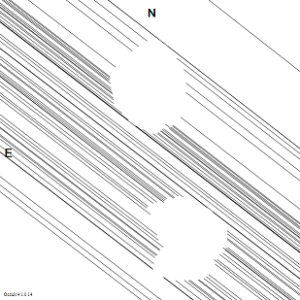Why Observe Occultations?
An occultation is one of the most profoundly amazing sights that the amateur astronomer can ever witness. Occultations are similar to eclipses in that they involve the passage of one celestial object in front of another. This process creates an opportunity to study the nature of one or both objects and offers professional and amateur astronomers exciting opportunities for continuing research. If, as an amateur astronomer or telescope owner, you are thirsting to feel relevant, to do something meaningful in your life and to see sights that few have ever witnessed, then occultations are the thing for you. The occultation process offers discovery and research. It is possible for amateur astronomers to discover new companions of stars, help to improve the polar diameters of the Sun and Moon, identify the existence of possible satellites orbiting asteroids, to improve knowledge of heights of lunar mountain peaks and depths of valleys in the polar regions, determine corrections to ephemeris errors and assess star position errors, improve knowledge of the shape and sizes of asteroids, and more through occultation science. It does not matter where you live in the world. If you have access to a computer and possess a telescope of at least 4-6 inches, know your geodetic position either from GPS or a good topographic map, have a source of time signals and tape recorder, you can make your own observations of these rare and critical events.
Occultations of stars by the Moon (lunar occultations)
As the Moon moves about the Earth, it covers stars along the way. We can take full advantage of this to record their disappearances and reappearances. There are two types of occultations of stars by the Moon: 1) direct occultations where the Moon completely occults the star for many minutes, 2) grazing occultations where a star undergoes a series of disappearances caused by lunar mountains at either the south or north lunar pole. The latter is more interesting and offers the opportunity to: a) help determine heights of lunar features and depths of lunar valleys and, b) determine if the star is a single star or may have close companions, c) improve information on the orbit of the Moon, d) improve positional information on the star.
A lunar grazing occultation is visible from a zone about two miles wide, which can be predicted approximately from lunar charts. If several observers with telescopes and timing equipment are positioned at intervals across the zone, they can each time the sequence of disappearances and reappearances as seen from their location. If the positions of the observing locations are measured, the timings can be reduced afterwards to determine details of the lunar profile, and gives a very accurate fix of the position of the Moon relative to the star. Such observations are useful for refining knowledge of the positions and motions of stars, and can be used to improve parameters such as the tilt of the Earth’s equator relative to the ecliptic and even the rotation of the Milky Way galaxy. Improvement of knowledge of the lunar profile for these observations aids the analysis of total solar eclipse timings, which can be used to study climactically important small changes in the diameter of the Sun over periods of many years. Also, the star’s disappearances or reappearances may occur in steps, indicating a previously undiscovered close double star that cannot be resolved by direct observations.
Asteroid Occultations
Thousands of small planet-like bodies exist in our solar system called asteroids. Asteroids generally orbit in-between the orbits of Mars and Jupiter. They are usually too small and too far away to be accurately imaged by ground based telescopes. We can indirectly study the shape and size of an asteroid by placing an observer with a telescope in the projected path of an asteroid occultation. This is where an asteroid passes between the Earth and a star causing the star to be briefly eclipsed. The shadow of the asteroid is projected onto the Earth and crosses a finite area proportional to the asteroid diameter. If many observers are placed in a perpendicular line across the occultation path, their individual timings of the disappearance and reappearance (or drop in brightness) of the target star will vary depending upon where along the path they are located.
Your observations, combined with those of others, can lead to results like the following profile of the double asteroid (90) Antiope.


